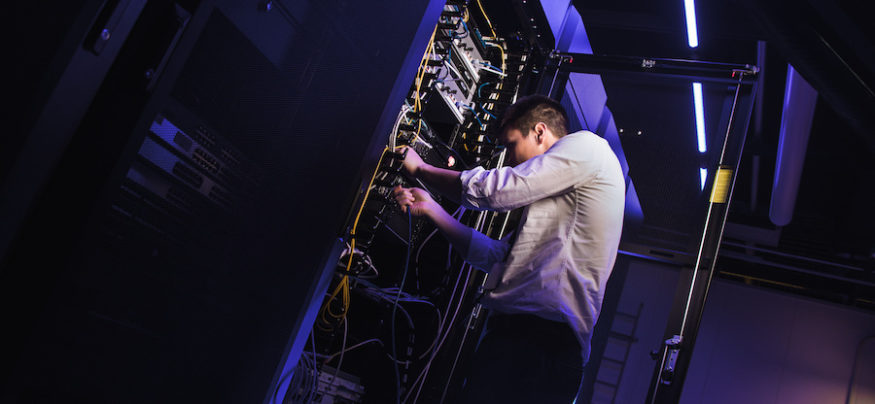Every company has different data storage needs, and each individual IT administrator must be discerning in their deployment of devices that will best suit the always-on nature of technology in the workplace.
The Samsung 983 ZET, a data center-specific solid state drive (SSD), brings a new standard in low-latency storage with a half-height, half-length (HHHL) PCIe NVMe form factor.
The Low Latency Impact
There are many applications that are quite sensitive to storage latency, including real-time transaction processing, online transaction processing, big data, database applications, e-commerce, High Performance Computing (HPC) and clustered applications, and even communications such as Voice Over Internet Protocol (VoIP) and video chat. These applications must respond to requests for information in real time, or deal with requests from tens of thousands to tens of millions of simultaneous users. With applications such as these, latency can have a nonlinear effect — increasing the latency of storage might degrade overall application performance by 10 times or more. For administrators looking for the best low latency SSD available, the 983 ZET makes the most sense.
The 983 ZET offers 3,400 MB/s sequential read and 3,000 MB/s sequential write speeds, and quality of service (QoS) reads and writes at 99.99 percent with up to 0.03 milliseconds and a minimal 20-microsecond latency. It is capable of up to 750,000 random input/output operations per second (IOps) on reads, and up to 60,000 random IOps on writes, with 8.5 drive writes per day and capacities of 480GB and 960GB. In SSD benchmark tests conducted by Storage Review, the 983 ZET has proven itself as a standout drive.
Speed and Accuracy for the Long Run
In addition to low latency, real-time applications often require extreme write performance — not only the ability to write quickly, but to write at full speed for extended periods of time without a drop in performance or QoS over time. The 983 ZET offers 10 times the number of drive writes per day (DWPD) of write-intensive data center drives, with very high QoS. This ensures the drive will not only perform well when installed, but will continue that performance for the life of the system.
Which SSD Is Best for Your Deployment?
Take this quick assessment to determine the best storage fit for your needs. Download Now
With critical systems, it is necessary to ensure that reads and writes are properly completed, even if there is a failure somewhere in the system. The 983 ZET includes data protection features that ensure that transactions will be completed even if the system power fails. Data is also protected from random errors or other corruption over the entire data path.
In addition to great performance, the 983 ZET is efficient and well-ventilated, ensuring that even during heavy loads, system performance will not be impaired by excessive heat or power usage.
What Is the HHHL Form Factor?
The HHHL, PCIe-based SSD may seem counterintuitive for many administrators. However, while more motherboards now offer the NVMe M.2 or U.2 interfaces than before, it is still a relatively rare inclusion, especially on server motherboards. Since the NVMe specification uses a 4x PCIe slot for each M.2 or U.2 slot, it is possible to divide a 16x slot into four NVMe ports with the use of a PCIe sled. However, this adds cost and can be difficult to keep well-ventilated. Server motherboards often have large numbers of PCIe slots, so using existing 4x PCIe slots and filling them with HHHL SSDs like the 983 ZET can be an optimal solution for upgrading existing servers as well as specifying new servers.
Data Center Tools
In addition, with data security always a factor, the Samsung SSD toolkit allows monitoring and control of SSDs while in operation, as well as secure erase functionality when needed. The toolkit allows updating of all Samsung data center SSDs at once rather than individually, and can also perform Self-Monitoring, Analysis and Reporting Technology (SMART) data functions.
How have SSDs evolved in recent years, and where does Samsung’s lineup of DCT components fit in? Catch up on today’s read and write speeds and modern form factors in this infographic.








